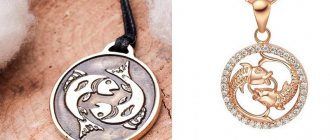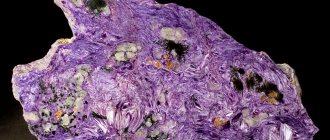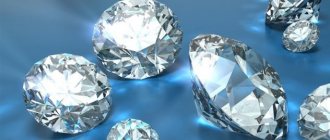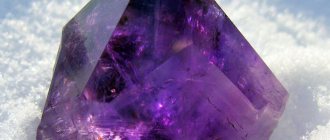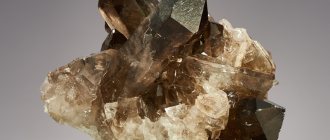Emerald is a stone of rare beauty and is considered a symbol of hope, wisdom and insight. It has many names. So, in French the stone was called emerald, and the ancient Slavs called it emerald. Emerald refers to gemstones that have a green tint.
Emerald is a stone that has a spectacular appearance.
Place of Birth
Good emeralds are rare, most of them are found in the Colombian deposits of Tunja (the deposit was discovered in 1555) and Muso (known since 1537), in New Granada, Zambia, Brazil and Egypt.
Emeralds of lower quality are found in Habachtal, in Salzburg (Austria), in the Mourne mountains (Ireland), on Lake Mjoesen (Norway) and in some other places. Emeralds are also mined in Russia, USA, Canada, Australia, Spain, France, Switzerland, Italy, Germany, Bulgaria, Kazakhstan, Pakistan, Afghanistan, India, China, Cambodia, Egypt, Ethiopia, South Africa, Somalia, Nigeria, Namibia, Tanzania, Zimbabwe, Mozambique and Madagascar.
Types of emeralds
Varieties of emeralds found in nature are usually distinguished depending on the place of extraction.
Emeralds of Colombia
Nowadays, from 50 to 95% of all emerald production comes from Colombia (the exact percentage varies greatly from year to year in different directions). Between 2000 and 2010, emerald production in Colombia increased by 78%. In addition to regular emeralds, Colombia also produces trapice emerald, which is distinguished by the formation of crystals in the shape of a wheel with spokes.
Colombian emerald Unguentarium
Emeralds of Zambia
Zambian emeralds are of higher quality than Colombian ones. Zambia's largest emerald deposit is the Kagem mine, which is located 45 km southeast of the city of Kitwe. In 2004, about 20% of all emeralds mined that year were mined here, making Zambia the second “emerald” country after Colombia. In the first 6 months of 2011, 3.74 tons of emeralds were mined in the Kagem mines.
Zambian emeralds
Emeralds of Brazil
Stones mined in Brazil are lighter and much purer than Colombian ones. It was also here that the world's largest emerald was found at 57,500 carats (11.5 kg), named Teodora and approximately valued at $1.15 million.
Emerald Teodora
Emeralds of Egypt
In Egypt, emeralds are mined in mines near El Quseir and Mount Zabara (this deposit, according to hieroglyphic monuments found there, was mined already in 1650 BC).
Deposits near Aswan, 50-60 km from the Red Sea coast, were developed under Pharaoh Sesostris III about 37 centuries ago. Slave miners dug shafts up to 200 meters deep in strong shale, which could accommodate up to 400 people at a time.
It was believed that emerald was afraid of light, so the work was carried out in complete darkness. On the surface, the emerald-bearing rock was split into pieces and smeared with olive oil in order to distinguish the precious crystals.
Ancient Egypt jewelry with emerald
Emeralds of Afghanistan
Or the Panjshir Emeralds, mined in the upper reaches of the Panjshir Gorge, in the area of Pawat, in the villages: Piryakh, Mabain, Zaradhak - 10-13 kilometers southeast and east of the village of Pishgor, in each of which from 20 to 40 mines were concentrated, and Also in the Darkhinj gorge there are significant deposits of emeralds.
During the Afghan War (1979-1989), the development of emeralds in the Panjshir Gorge was under the control of a major field commander, Ahmad Shah Massoud. After mining, the emerald was sent to Pakistan for processing, and from there distributed to international markets.
The amount of funds received for emeralds during this period averaged up to $10 million per year. Mining work on rocky soils was carried out by Japanese drilling rigs with the involvement of Western European engineers.
Afghan emeralds
According to jeweler Oded Burshtein, Afghan emeralds are an equal alternative to emeralds from Colombia and Zambia, they compete equally in beauty, and even better quality, since the crystal of the Afghan emerald is cleaner and denser, and emits more bright shine, has a unique shade and hardness when cut , due to the natural hardness of the crystal itself.
“Only by acquiring an Afghan emerald can you truly appreciate its beauty, rich brilliance, durability and unique green hue. And the fact that there are very few green beryls from Afghanistan on the gemstone market makes them even more desirable.”
— Oded Burshtein “Inbar Fine Jewellery.”
Ural emeralds
The emerald mines of the Urals were discovered by Maxim Kozhevnikov and Yakov Kokovin in 1831 at the confluence of the Tokovaya River and the Bolshoy Reft River, 90 km northeast of Yekaterinburg. They are famous for their emerald crystals, unique in size, as well as alexandrite and phenacite.
Ural emeralds
During the first century of development, more than 15 tons of precious stones were mined here. The emerald mining area is 25 km long and 2 km wide; there are several deposits located here, including Malyshevskoye. In these bedrock deposits, emeralds are found embedded in carbonaceous limestone and mica schist.
Where are green gems mined?
In nature, emerald deposits are accompanied by a specific rock called greisen. It is through it that geologists find new deposits of precious stones. It forms in places where hot water from wells over the centuries destroys granite and changes its structure.
The world's largest example of emerald was found in India.
It was under these conditions that Colombian emeralds were formed, which since the beginning of the twentieth century have been considered the best in the world. Geologically, hydrocarbonate shales combined with granites are ideal for forming green gemstones.
Typically, a deposit appears as a large number of inclusions in an ore vein. More than half of the world market is occupied by Colombian and Brazilian emeralds. Only in this region do you come across trapiche - unique stones of a bluish-green or blue hue. It is believed that they can only form in shale ore conditions unique to Latin America.
Mining is also carried out in other countries:
- Canada;
- USA;
- Pakistan;
- Afghanistan;
- India;
- Madagascar.
In Russia, especially in the Urals, green beryl is also mined. Minerals from this region are famous for their size and transparency, although the deposits themselves are not rich, and such products do not occupy a significant share of the world market. However, the world's largest sample of emerald was discovered not on the territory of the Russian Federation, but in India.
Magical properties of emerald
Gold ring with emeralds
The magic of emerald extends to many areas of human life.
With it you can:
- Get rid of bad habits and bad inclinations: deceit, tendency to fraud and theft, laziness and debauchery.
- The stone is endowed with the ability to enhance the best qualities that its owner has.
- If the owner of the stone continues to remain in the grip of the above vices, the emerald will not only stop helping him, but will also begin to openly harm him.
Having exhausted its strength, the crystal will simply split.
Also:
- Improve financial well-being.
- Protect your home from danger and black magic.
- Detect adultery.
- Establish friendly relationships in the family.
- Find your life purpose by becoming more reasonable and wiser. It is not for nothing that emerald is called the stone of teachers and sages.
- Establish a connection with the other world and establish contact with the souls of the dead. With its help, people involved in magic and the occult can easily decipher the meaning of signs and answers sent by supernatural forces.
Story
The magical emerald was valued and revered in the ancient world.
The Egyptians considered it a symbol of the goddess Isis, the patroness of femininity and motherhood. Mothers who tirelessly prayed for their children received emerald branches as a gift from her. In the emerald mines of Queen Cleopatra, gems were mined for the wives of high priests and representatives of high castes. “Stone of Radiance” is what this mineral was called in Ancient Greece.
In Persia, "zumurrud" meant "green stone." Through this Persian word and the Turkish “zumrut” the name “emerald” appeared in the Russian language. Previously in Rus' this mineral was called emerald. In English-speaking countries, the name of the mineral is emerald.
On the breastplate of the high priest of Judea, the gem occupied an honorable third place.
In Islamic countries, the magical properties of emerald were valued; it was an important attribute in occult practices.
Emerald has an ambiguous meaning among Christians. On the one hand, it is related to dark forces, since the Old Testament says that when Lucifer was expelled to Earth, a stone fell out of his helmet. On the other hand, it is the embodiment of the forces of light, because the Holy Grail is made from it.
There was a belief that if you show this gem to a snake, tears will flow from its eyes. The color of the stone reminded of a blooming paradise, and it was bitter for the snake to remember its sin.
Emeralds appeared in European countries in the 16th century , when conquistadors brought gems captured from the Indians. They were transported to the Old World in huge numbers. Not long ago, off the coast of Florida, divers found almost 2,300 emeralds in the early 17th century .
Previously, sailors took emerald with them on voyages, believing that it protected them from dangers.
During the Renaissance, newlyweds exchanged rings with emeralds, as they believed that these gems would provide them with a permanent feeling of love. They were believed to favor pregnant women.
In 1831, these gems were discovered in the Urals and the deposits began to be actively developed. Nowadays in Russia, emeralds have a currency value, as determined by law.
Medicinal properties
Brooch with emerald Hooker
The value of natural emerald lies not only in its beautiful appearance, but also in its healing power. Since ancient times, the powder from this nugget was used as an antidote, a remedy against night blindness, and an eyesore. Healers have long believed that if you hold a stone in your mouth, you can get rid of diabetes, dysentery and even psoriasis.
The healing properties of the gem are not limited to this. It is used for different conditions:
- therapy for mental disorders;
- emerald has a pronounced antibacterial effect;
- helps normalize blood pressure;
- relieves pain in the stomach and joints, improves memory, develops flexibility of thinking;
- eliminates insomnia;
- relieves allergies, asthma, bronchitis;
- relieves inflammation in genitourinary pathologies.
Talismans and amulets
Gold belt of the Shah with an emerald weighing 176 carats.
Kept in the National Treasury of the Central Bank of Iran in Tehran For a long time, the emerald has been considered a talisman for mothers.
By protecting a woman during pregnancy and during childbirth (thanks to its effect, the threat of premature birth disappears, pain during contractions is reduced, and ruptures are minimized), it contributes to the birth of a healthy child.
Subsequently, the gem will help the mother not only better understand the needs of the baby, but also build a harmonious relationship with him.
Also:
- A crystal placed at the front door or lying on the desktop is an excellent amulet that protects the house from evil spirits and unkind people.
- A young family using an emerald as a talisman will be able to avoid betrayal, conflicts and quarrels, and will find happiness and harmony. It will protect spouses who have lived together for more than one year from fading feelings: it is not for nothing that the 55th anniversary of marriage is called the emerald wedding.
- For unmarried girls, the gem will become a reliable amulet that helps maintain chastity.
- The emerald amulet will bring wealth and good luck to travelers, and will protect sailors from bad weather and storms.
- Creative people and businessmen can use it as an amulet that brings inspiration and success.
The crystal, which plays the role of a love amulet, is recommended to be worn on the ring finger or little finger.
Emerald - unlike most minerals - can be passed on by inheritance. All its positive qualities are preserved.
Areas of application
Emerald crystals
The main use of emeralds is in the production of jewelry.
Stones of a deep green tone are most valued; even if there are inclusions, they are preferred to be pale colored, even almost transparent.
To process transparent emeralds, the following types of cuts are used: step, rectangular “emerald” or “square”, less often diamond. Translucent stones are processed in the form of cabochons.
Dichroism must be taken into account.
It should be noted that only a very small part of emeralds is processed in the countries where they are mined. The highest quality emeralds are processed in Idar-Oberstein (Germany), Ramat Gan (Israel), London, Geneva and New York. Medium and low quality stones, which make up the bulk of mined minerals and are suitable for making cabochons, are processed in India. They are often combined with diamonds in jewelry.
The luster of emerald is usually vitreous. The physical properties, especially density, light and birefringence, as well as pleochroism, vary somewhat among emeralds from different deposits.
The quality of jewelry stones is assessed in accordance with international requirements. The most valuable are bright green crystals with minor inclusions. Bright color is the main factor influencing the price.
Emerald inserts adorn many pieces of jewelry stored in museums or state treasuries.
Emeralds are also used to create solid-state lasers. Synthetic emeralds are used in quantum electronics.
Color varieties
All emeralds differ in color, as well as in the degree of transparency, but they are classified according to their places of extraction. There are the following types of emeralds:
- Colombian. The stones are grass-colored and have minimal damage and defects. Colombians also mine a special type of stone - “trapiche”. This is a nugget with a design that resembles a wheel with six spokes radiating out from the center of the crystal.
- Brazilian. Minerals are lighter and more transparent than Colombian ones.
- Zambian. They are considered the most beautiful of all stones mined on the planet. Crystals from Zambia are ideally clean, transparent, rich green in color. There are specimens with a yellow or blue tint.
- Zimbabwean stones combine two shades - green and yellow.
- Ural. The nuggets are large in size, densely green in color, but opaque.
- South African. Light crystals, cloudy. Such stones are processed only as cabochons.
When assessing the jewelry quality of an emerald, the first criterion is the color of the stone. Rich, deep green minerals are highly prized, even if they have minor imperfections. A perfectly transparent, but light-colored nugget costs less. Emeralds that are flawless in all respects are worth more than diamonds with similar characteristics.
Emerald products and jewelry
Tiara of the Duchess of Anjou, contains 40 emeralds and 1031 diamonds.
Made in 1819-1820. in Paris Emerald is used for jewelry of all types. They are worn on special occasions, with a wardrobe of the same level.
Pairs with rubies or sapphires. The height of chic is a scattering of diamonds around a stone in gold or platinum.
Gold jewelry is the best gift for a woman on a special occasion. Earrings, bracelet or necklace are given for the birth of a child. An emerald ring is bought for an engagement or wedding.
The men's assortment includes a massive platinum or silver ring, a tie clip, and cufflinks with a rectangular translucent emerald.
The modern bohemian trend is deliberately careless large jewelry with unpolished inserts. Silver is light or blackened.
The stone is valued based on color and origin (stone cost per carat):
- bright green - $2000;
- pale - $500;
- artificial - $200.
Price of emerald jewelry:
- in gold: earrings - $130-500, ring - $100-300;
- with diamonds: ring - $200-500, pendant - $70-200, earrings - $150-700.
Silver accessories are equipped with nanocrystal inserts. The price of such emeralds is several times less than natural material. For example, a ring costs about $30, earrings - $25-30.
Methods for refining crystals
It is better for overly impressionable jewelry connoisseurs not to know how gems are mined industrially. If previously soft soil was carefully loosened with sticks, now the rock containing emerald ore simply explodes. In this case, not only those minerals that could be located at the place where the charge was placed suffer. Since such a characteristic of emerald as strength leaves much to be desired, due to the shock wave, a rare stone in the destroyed rock does without cracks, or even splitting.
In order to make them less noticeable and prevent further destruction of the gem, cracks were previously treated with oil, mainly cedar, which has a refractive index similar to the mineral. African craftsmen still prefer oil processing, but rarely do any of them manage to completely hide defects. But in South American countries, cracks are now filled with epoxy resins. For this purpose, special vacuum or thermal devices are used. Other crack fillers include adhesive silicone, natural latex, and even silicate glue. More than 95% of stones on sale were refined in one way or another.
The preservation of the fragile mineral is also facilitated by a special type of cut, which protects it from accidental damage and best reveals its rich color. It has a square or rectangular shape with chamfered corners. For a sample that has a large number of cracks, only grinding without edges, in the shape of a pearl or cabochon, is used, since with other types of processing it can crumble.
Gold ring DIAMONDS OF KOSTROMA with emerald and diamonds (go to the SUNLIGHT catalog)
For particularly fragile gems, a special mount with a closed bottom is used. However, this means that the crystal will transmit less light and will dim even when slightly dirty. Cleaning must be done with the utmost care. The stone should not be rinsed in a soapy solution, as it will wash out the oil that fills the cracks. The use of any solvents should be completely avoided. Ultrasonic cleaning devices cause particular damage to the mineral. Every time you remove jewelry, you need to thoroughly wipe the stone with a flannel rag. Then it will look like new for a long time, and it will not soon require professional cleaning in a jewelry workshop.
How to distinguish an original from a fake
Colombian emeralds
The stone’s belonging to the huge beryl family, as well as developed technologies for the production of artificial stones, create a real haven for unscrupulous sellers. They can sell cheaper emerald “relatives” at a price close to the cost of the gem. Also, many of them sell laboratory crystals or even pieces of glass.
In order not to make a mistake when buying an expensive gem, you need to remember what an emerald looks like if you examine it carefully.
- Emerald tends to change its hue depending on the angle at which it is viewed. This property is called dichroism. By turning the stone, you can see how it turns from dark green to bluish or vice versa.
- Natural emeralds, at least jewelry examples, always have a velvety hue. Light green, light green, “bottle” stones are crystal-like beryls of cheaper varieties, or synthetics.
- Natural gems are almost never perfect. Those that do not have cracks, air bubbles, abrasions or “grains” of a different color are more expensive than diamonds. You will never see them in regular jewelry stores; these are collector's items. Defects can be examined with a magnifying glass. If they are not there, you have a laboratory stone in front of you.
South African emeralds
Its passport can also tell a lot about a gem. If it contains the phrase “hydrothermal emerald,” it means that the stone was grown in a laboratory. This crystal is completely identical to the best specimens from Colombia. The technologies used to produce these minerals are considered a trade secret.
Gems of this type are free from flaws, have a rich color and a bright play of light. But their cost is much lower than that of natural emeralds, so when they try to sell such a specimen at the price of a genuine one, it is a fraud.
For those who plan to buy a crystal for use in magical practices, hydrothermal stone is not suitable. Only natural gems have magical properties. This is due to the fact that real minerals grow in the earth for thousands of years, absorbing cosmic and earthly energy. Laboratory specimens, no matter how beautiful they are, simply do not have the time to acquire the appropriate energy.
Emerald color
What color is emerald? This question interests many people. The main color of the stones is green. The shade is affected by the presence of impurities. These include: chromium oxide, iron oxide, vanadium oxide.
If we talk about color, emerald has 5 main varieties. They depend on the tone and lightness. As a rule, stones are divided by shade:
- light;
- medium light;
- medium - it is often called herbaceous;
- medium dark;
- dark.
When purchasing a natural stone, you need to take into account that emerald contains many inclusions and cracks. Therefore, its purity should not be assessed too strictly.
Emerald can have a darker or lighter shade.
Artificial emerald
Synthetic cut emerald
Artificial emeralds are similar to natural stones, but their density and refractive indices are lower than those of natural ones. Synthetic emeralds have a very distinctive rich bluish-green color, although some Colombian emeralds have similar properties. Through the Chelsea filter they appear intensely red - significantly redder than most natural emeralds.
Regular and artificial emeralds are distinguished using filtered ultraviolet radiation (360 nm), to which real emeralds do not normally react, but synthetic emeralds exhibit chestnut-brown luminescence.
However, this rule is not always confirmed. Many natural emeralds can also react to filtered ultraviolet light.
Currently, industrial methods have been developed for the synthesis of emerald, which is indistinguishable from natural in color and superior in quality.
But the cost of synthetic emerald on the international market remains tens of times lower than natural emerald, since natural emerald is less common. It is possible to grow synthetic emeralds of quite large sizes, up to hundreds of carats.
Artificial emeralds
The production technology is kept secret. For example, the Carroll Chatham Laboratory, California, USA, only accepts workers with incomplete secondary education. It is known that crystals are grown using the flux method in a platinum crucible on a natural emerald seed. In addition, crystal growth is very sensitive to voltage surges.
Since the second half of the 19th century, specialists from several countries have tried to solve the problem of emerald synthesis. The first successful experiments date back to 1888 (France), but a full-fledged artificial emerald was obtained only in 1935 in Germany by the scientist G. Espigue and his colleagues and was named “igmerald” - after the first letters of the company name and the English “emerald” - emerald . Since 1940, the Americans have established industrial production of Igmerald.
Today, emeralds are also produced in Germany, France, Switzerland, Japan, Russia and Belarus.
The largest producer of water-based emeralds in the world is the Tairus company, a joint venture between Russia and Thailand. The company managed to synthesize emeralds that are no different in composition from Colombian ones.
Treasures of the Mistress of the Copper Mountain
The famous Ural deposit, where emeralds have been mined since the mid-19th century, deserves a special mention. The Mariinsky mine (currently the Malyshevskoye deposit), which produces the most generous emerald ore for gems, has produced a large number of very large specimens during its existence. In total, over 15 tons of crystals were mined in the Urals. Ural emeralds are valued for their purity and rich May green color.
The largest gems receive their own names. More recently, in 2012, a crystal weighing 637 was found. It was named “Jubilee” in honor of the 65th anniversary of the mining plant. And the unprocessed emerald weighing 1200 g (6 thousand carats) found in 1993 was named “President” by the Urals in honor of fellow countryman B. N. Yeltsin.
It was arrested for the plant's debts, but was subsequently purchased by the Diamond Fund for $150,000, although the real value of the stone is much higher. The “Glorious Ural”, mined in 1978, weighing 3362.5 carats, is also located there.
A grassy-green crystal of rare purity, mined in 1834, became the record holder of the Ural mines. It was called the “Kokowina Emerald,” but soon this stone was irretrievably lost. Some sources suggested that the mineral was first stolen and then cut into pieces to avoid exposure. Now another precious stone bears the same name: an emerald from Kochubey’s personal collection, which is now in the Mineralogical Museum. A.E. Fersman RAS. Its weight is 2226 g (about 11 thousand carats).
Gold earrings SL with emeralds and diamonds (go to the SUNLIGHT catalogue)
How to care for stone
Products with emerald
Emerald is durable and difficult to damage at home. However, it does not tolerate cosmetics, water, or household chemicals. Loves darkness and coolness. Pebbles and jewelry deserve proper care:
- When washing, cooking, or other household work, jewelry is removed;
- put on jewelry when makeup is applied: powder, eye shadow, blush are destructive to the gem;
- store jewelry in a casket or other durable closed box; Alternatively, wrap each item in a soft cloth.
Contaminated jewelry is soaked in warm soapy water. If necessary, rub lightly with a soft cloth or brush.
It is worth investing in a special protective layer - it is applied to items with emerald by jewelers.
Compatibility with other minerals
Being a mineral of the air element, emerald does not combine well with Water stones: opal, pearl, topaz, amethyst, heliotrope, alexandrite.
In jewelry, cut emerald is ideally combined with diamonds, as well as with stones of the same category, which includes: sapphire, peridot and ruby.
Agate makes an equally harmonious pair for it.
How to wear it correctly
It is necessary to wear emerald jewelry correctly, taking into account the properties of the stone:
- It is advisable to have a full set of jewelry - it is stylish. In such a situation, the stones have the opportunity to better influence the owner.
- If you want to have a stone in the form of a talisman, it is better to keep it untreated.
- Be sure to consider whether the mineral is suitable for your zodiac sign. Scorpios and Capricorns should not purchase such an amulet.
- Wear jewelry on the little finger, but since this nugget is a love amulet, it is allowed to be worn on the ring finger.
Who suits the name
An emerald engagement ring with a diamond in gold
Emerald is ideal for a woman named:
- Julia. The stone will not only protect her from all kinds of troubles and misfortunes, but will also attract good luck to her.
- Isabel. Having cleansed the aura, the mineral will drive away negative energy from it, help preserve the family hearth, impart composure and give impetus to inspiration.
- Elena. The support of the stone will make her more balanced and wise.
The emerald will become a talisman for a man named:
- Peter. Having gotten rid of bad thoughts and sadness, he will gain hope and the ability to think soundly.
- Hermann. The crystal's help will open the way to the future, giving him wisdom and hope.
- Klim. The stone will not only help him overcome his melancholy, but will also make him forget about love failures.
Auspicious names
Emerald is a symbol for people with names under the auspices of the planet Mercury.
Among the women are: Anastasia, Ekaterina, Evgenia, Yulia, Vasilisa, Veronica, Emma, Natalia, Marfa, Svetlana.
Wearing a gem will be favorable for men with the following names: David, Konstantin, Vitaly, Daniil, Bogdan, Stanislav, Philip, Gennady, Yuri and Pavel.
Emerald and zodiac signs
Ring with an emerald
Emerald is a friendly stone, but it is not ideally compatible with all Zodiac signs. The mineral best protects the following signs:
- Twins. Excessive aggression and hot temper of this sign will be replaced by wisdom and composure under the influence of the talisman. Geminis will experience better concentration, improved memory, and will become mentally calmer, more cheerful and responsive. This is a plus for communicating with others.
- Cancer. For hot-tempered and sometimes aggressive Cancers, emerald will give balance and harmony. The amulet will make representatives of the sign self-confident, friendly and open, which will help Cancers find good friends.
- Calf. For them, emerald will become a source of vivid emotions and impressions. The talisman will strengthen intuitive thinking, attention, memory, which is important for concentrating on a goal and moving towards achieving it.
It is not recommended for Scorpios to wear emeralds. There are many more suitable minerals for them. Other signs may not feel the influence of the stone at all or feel it less strongly.
| Zodiac sign | Compatibility> (“+++” is ideal, “+” is good, “-” is bad) |
| Aries | + |
| Taurus | +++ |
| Twins | +++ |
| Cancer | +++ |
| a lion | + |
| Virgo | + |
| Scales | + |
| Scorpion | — |
| Sagittarius | + |
| Capricorn | + |
| Aquarius | + |
| Fish | + |
